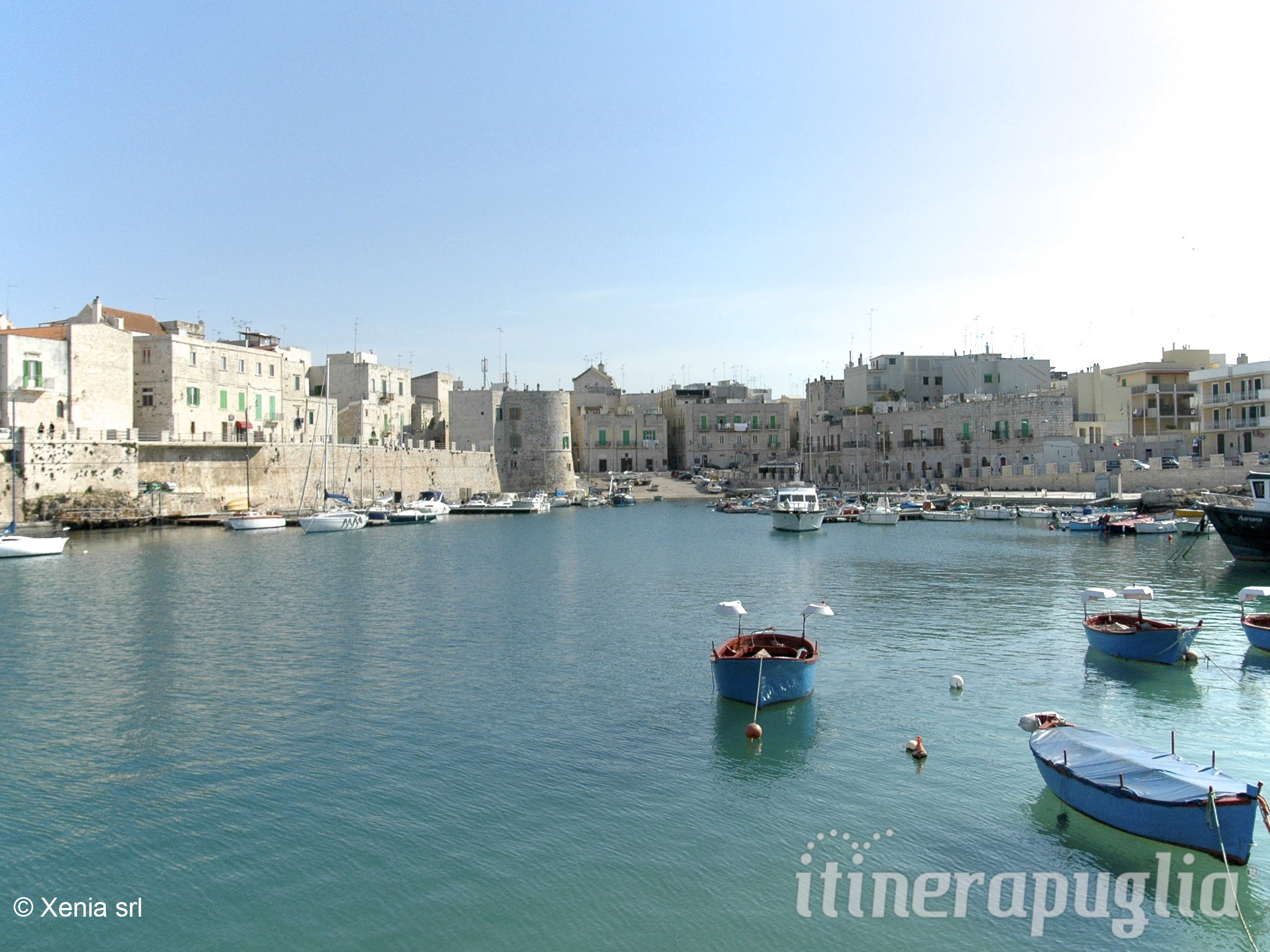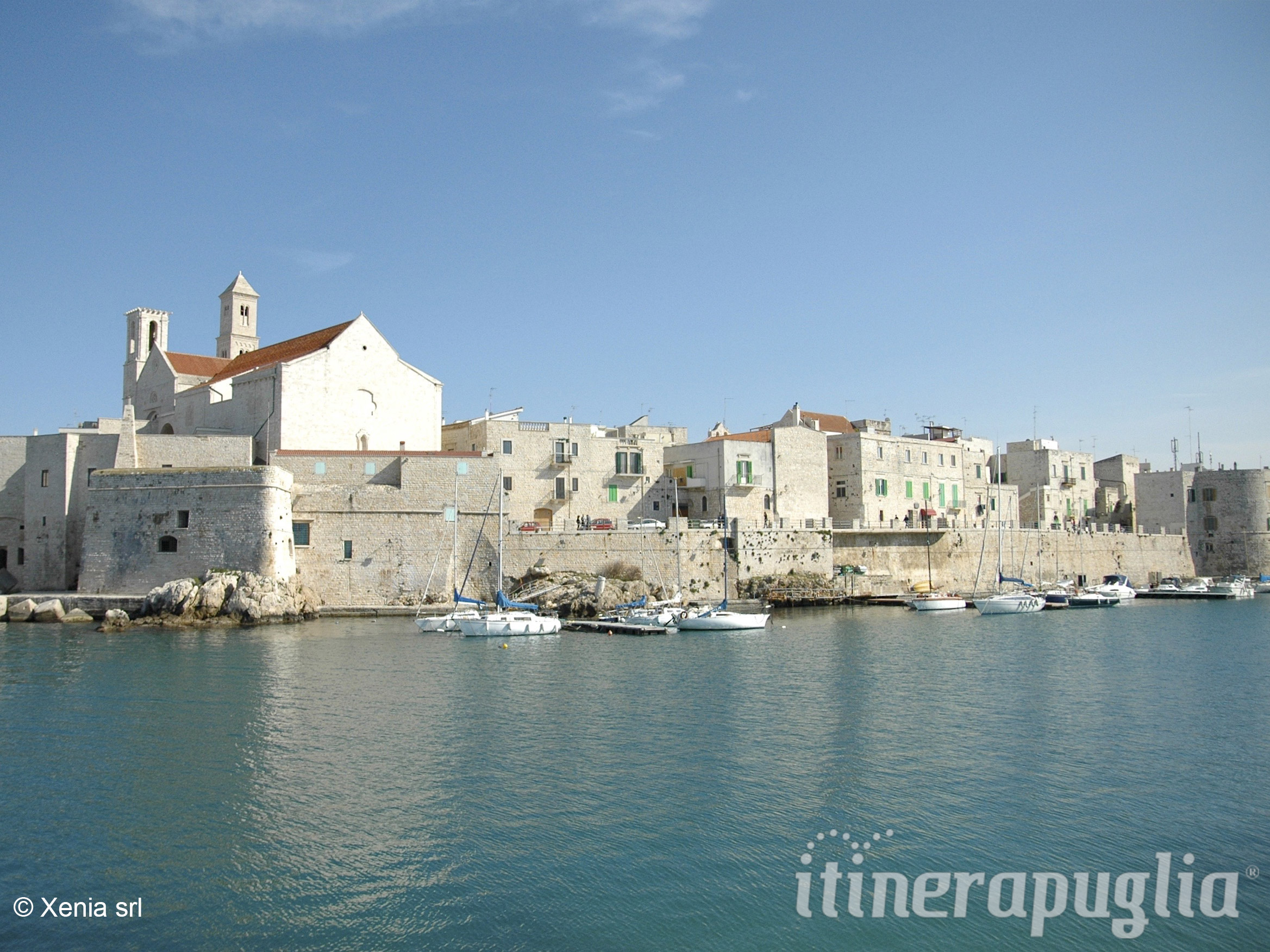A village on the sea
Giovinazzo is a small village north of Bari and is on a small peninsula stretching out into the sea. The city center is characterized by a Medieval village and a little harbor that is a natural creek.
The promenade lends itself to pleasant walks and in clear day you can see the lights of Trani and the Gargano promontory.
Also on the little harbor overlooking the elegant Cathedral dedicated to Santa Maria Assunta; The church is built by the Princess Constance of France to honor the memory of her husband Bohemond I of Altavilla and was completed in 1180.
 The Cathedral was rebuilt in the seventeenth and eighteenth century in Baroque style and original Romanesque architecture remain only the crypt and the southern facade.
The Cathedral was rebuilt in the seventeenth and eighteenth century in Baroque style and original Romanesque architecture remain only the crypt and the southern facade.
The oldest center of the city is characterized by white limestone houses; a gateway to the historic center could be the Trajan Arch realized perhaps in the fourteenth century to give the city a grand entrance, note the milestones columns of the second century with a commemorative text and medieval capitals.
The Church of Santa Maria of Constantinople dates back to 1528, inside houses the main altar with a picture of dell’Odegitria Virgin and the painting of St. Michael. On the central front, there is the emblem of St. Thomas the Apostle, patron of the town and a stone statue of St. Christopher, the work of sculptor Antonio giovinazzese Altieri.
Other works of excellent workmanship are preserved in the small church of Santa Maria del Carmine, this is the seventeenth and eighteenth century paintings by Carlo Rosa, Alonso de Corduba and brothers De Musso
The oldest bell in the city is preserved in the church bell tower of St. John the Baptist where you can admire the wooden statues of the fifteenth and sixteenth century and the tomb of the reverend Benedictine nuns.
Giovinazzo is also home to elegant period buildings such as the Ducal Palace built by Duke Nicholas Judge; the elegant courtyard and balcony overlooking the sea evoke memories of the past.
Palazzo Lupis, the thirteenth-century welcomes a beautiful staircase adorned with bas-reliefs depicting putti and musicians.
 Palazzo Zurlo has belonged for a long time to Zurlo family of which he remembers the figure of Captain Francesco, Barletta judge in the duel; probably the palace was the seat of the feudal lord of the city or of the royal governor.
Palazzo Zurlo has belonged for a long time to Zurlo family of which he remembers the figure of Captain Francesco, Barletta judge in the duel; probably the palace was the seat of the feudal lord of the city or of the royal governor.
Paint palace, residence of the noble paint from the sixteenth century, preserves a precious stone relic of the thirteenth century, attesting Confirmation administered in 300 A.D. 99 giovinazzesi. Palazzo Saraceno is a beautiful example of Renaissance civil architecture of the fifteenth century; the building is full of coats of arms, inscriptions, skirting rusticated and elegant windows on a pensile.Passeggiando beautiful garden to the little harbor you can see the bastion of the Aragonese XV secolo.I giovinazzesi call “u furtino”.
The artifact has been widely used, and in more recent times was the seat of the telegraph and postal services.
Numerous archaeological findings suggest that the current area occupied by the town was inhabited from the Bronze Age; was the ancient Natiolum. Over time, the town was a center of the first magnagrecia and Roman conveniently placed along the Trajan.
Towards the end of the first millennium, the city changed its name to Juvenatium, ie Juvene Natiolum, thus indicating the new state’s largest city and the largest population.
During the Crusades Juvenatium exploited to the maximum the potential maritime city and the Norman-Swabian period had much autonomy reaching its maximum splendor.
In collaboration with the editors of Itinerapuglia.com




